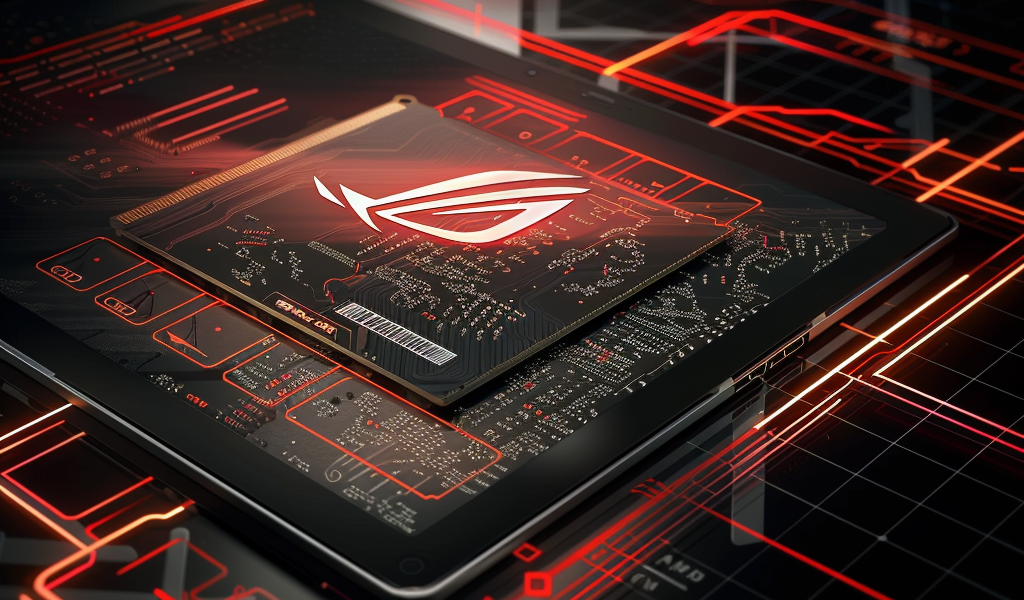Recent leaks have unveiled exciting details about AMD’s upcoming Strix Halo APUs, specifically designed for high-performance mobile platforms. This information, shared by thermal engineer Sam Jiun-Wei Hu, highlights the impressive capabilities of these chips, which are set to power the ASUS ROG Flow Z13, a hybrid device blending tablet and laptop features, anticipated for release in 2025.
The AMD Strix Halo APUs are engineered to support advanced performance metrics, boasting a robust RDNA 3.5 integrated GPU (iGPU) and compatibility with LPDDR5x-8533 memory. One of the standout specifications is the potential thermal design power (TDP) of up to 120 watts, indicating the chip’s capability to deliver substantial performance.
Delving into the architecture of the Strix Halo APU, it comprises three distinct chiplets: two Zen 5 compute complex dies (CCDs) and one GPU die that integrates the I/O and memory controllers. The Zen 5 CCDs are measured at approximately 66.345 mm² and 70.6 mm², accommodating eight cores each, which translates to a total of up to 16 cores and 32 threads. This architecture is designed to ensure robust multitasking and high processing power, with clock speeds reaching up to 5.36 GHz for certain configurations.
In terms of graphics performance, the iGPU die is particularly noteworthy. It measures 19.18 mm x 16.02 mm, totaling around 307 mm², which is significantly larger than the Strix Point APU’s entire size of 232.5 mm². This substantial size is indicative of its capability, as it houses up to 40 RDNA 3.5 compute units, promising exceptional graphical performance that could rival discrete GPUs.
The overall dimensions of the Strix Halo die are 24.04 mm x 19.78 mm, yielding a total area of 475.31 mm², nearly double that of its predecessor, the Strix Point APU. The increased die size is primarily attributed to the iGPU, which is expected to be the most power-demanding component of the chip, with a hotspot temperature recorded at 86.6°C.
Breaking down the power consumption, both Zen 5 CCDs (referred to as CCD0 and CCD1) are rated for a maximum power draw of 15W each, summing up to 30W for both. The integrated I/O die, which includes the RDNA 3.5 iGPU, is rated at 72W. Additionally, the standard SO-DIMM memory configuration contributes approximately 13W. Therefore, the total power consumption for the Strix Halo APU, excluding the memory, is projected to be around 115W.
These advancements signal AMD’s commitment to enhancing mobile computing performance, particularly in the gaming and creative sectors, where high processing power and graphics capabilities are essential. The integration of such powerful components in the ASUS ROG Flow Z13 will likely cater to enthusiasts and professionals seeking top-tier performance in a portable format.
The Strix Halo APU is poised to set a new standard in the mobile computing landscape, with AMD’s innovative architecture and advanced thermal management solutions ensuring that users can expect exceptional performance without compromising on efficiency. As we approach the anticipated launch date in 2025, industry watchers and tech enthusiasts alike will be keen to see how these new APUs will shape the future of mobile computing.





